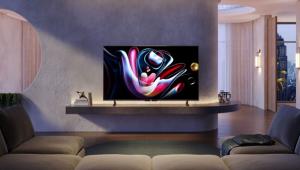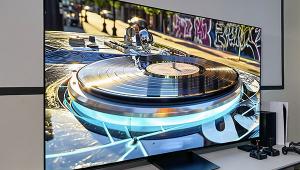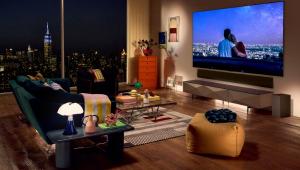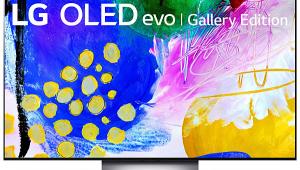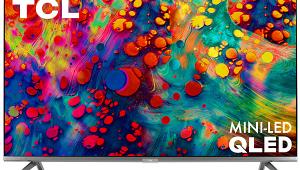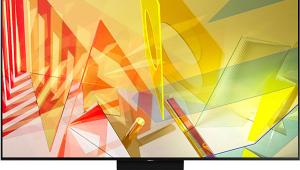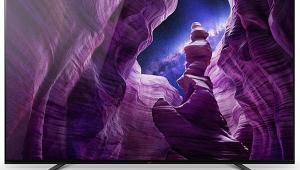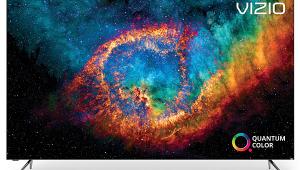Samsung UN60JS7000FXZA LCD Ultra HDTV Review Test Bench
Measurements here were made using CalMAN measurement software from SpectraCal, together with Photo Research PR-650 and Klein K-10A color meters, a VideoForge pattern generator from AVFoundry, and (for 4K patterns) a DVDO AVLab TPG.
Full-on/Full-Off Contrast Ratio: Unmeasurable
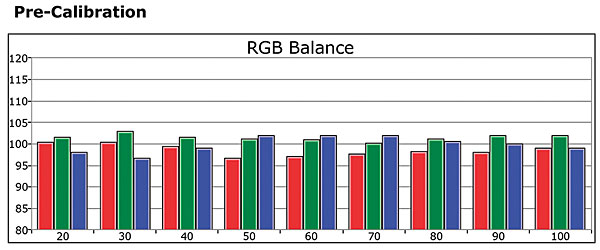
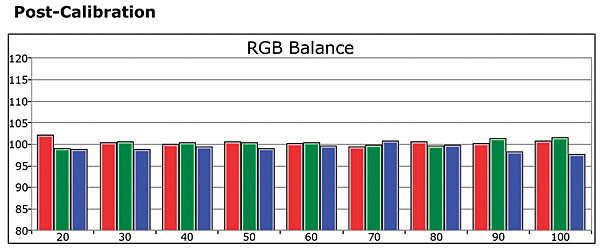
The set was calibrated in the Movie Picture Mode, in the Warm2 Color Tone (Samsung’s name for color temperature). All calibrations were performed on upconverted 1080p patterns, using the Rec. 709 standard—the standard used on virtually all program material available today. While we’ll see a wider color gamut in UHD material soon, at present it’s not a factor.
The unmeasurable full-on/full-off contrast ratio above was only the case when the black level was measured with a full black screen, when the backlighting closes down almost completely. Add even the smallest spot of light, however, and the entire screen gets brighter. With only the pause bug from our Oppo BDP-105D Blu-ray player displayed in the corner of an otherwise black image, for example, the full-on/full-off contrast ratio (measured at center screen) was a relatively poor 1,608:1—peak white 38.75 foot-lamberts, black 0.024 ft-L. (As a comparison, the measured black level on some of the best but no longer available plasma sets was often 0.001 ft-L or even slightly less—almost 25 times better.)
The set’s pre-calibration grayscale Delta E values averaged a very good 1.63, at a peak white level of 36.1 ft-L. The highest Delta E values were 2.72 at 100% and 2.44 at 90%. No other level exceeded 1.79. After calibration, using both the 2-point and 10-point White Balance controls (they can be used in tandem), the grayscale Delta E averaged 0.97, with a maximum of 3.21 at 100% and 2.14 at 90%. At all other levels, the maximum post- calibration Delta E was 0.68. The 10-point controls for 80% and 90% had little or no effect.
I also discovered that all of the 10-step controls were off by one level. For example, to calibrate at the 50% level, I had to set the adjustment menu to 40%. Weird, but I recall seeing this bug on a Samsung set under review several years ago. Apparently, it’s back. (The improvements from using the 2-point adjustments alone were satisfying in themselves; the visible improvements from the more tedious to use 10-point controls were small. But we have no way of knowing if this will be true with every sample as it comes off the production line.)

Delta E is a figure of merit indicating how closely a display adheres to the Rec. 709 HD color standard. Experts generally agree that at levels below 3 to 4, the result is visibly indistinguishable from perfect color tracking. A Delta E may be used to characterize either white balance (grayscale), as above, or color, as below.
Pre-calibration, using the Custom Color Space in its default settings, the color gamut’s Delta Es averaged a solid 2.25. After calibration, they averaged 0.83, with red, at 3.64, the only value over 0.83.
With the Gamma control on –2, the post-calibration gamma averaged 2.37, with a high of 2.42 at 30% and a low of 2.35 at 60%.—TJN


